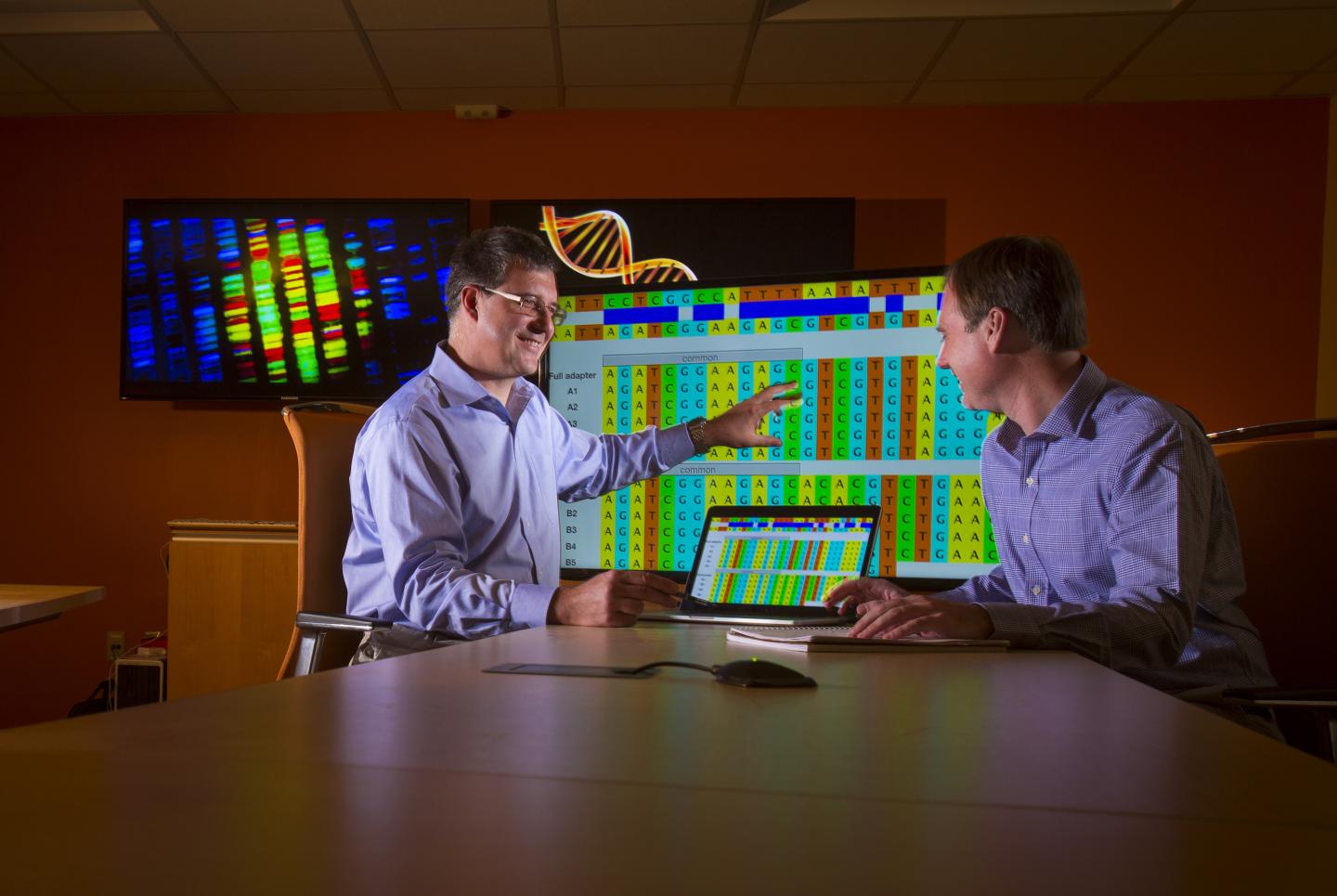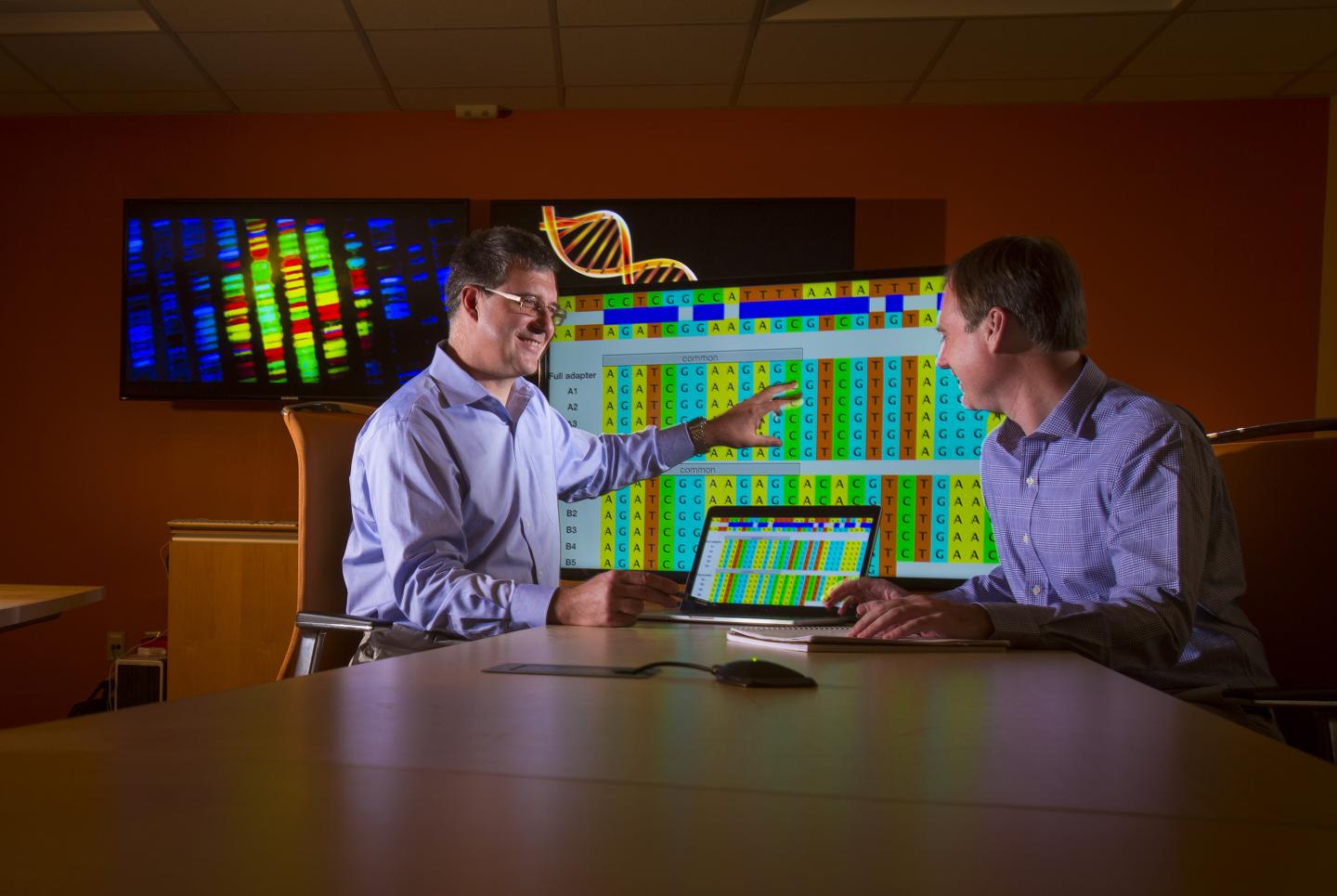
Credit: John T. Consoli/University of Maryland
Computational biologists in the University of Maryland Institute for Advanced Computer Studies (UMIACS) are collaborating with other experts to develop new approaches and tools for screening DNA sequences that might accidently–or intentionally–be altered, resulting in a biological threat.
Mihai Pop, a professor of computer science and interim director of UMIACS, and Todd Treangen, an assistant research scientist in UMIACS, are working closely with the Fraunhofer Center for Experimental Software Engineering and Signature Science LLC on next-generation computational and bioinformatics tools that can quickly assess whether certain synthesized DNA strands could pose a risk.
"This is an ambitious project that will join experts in biology, bioinformatics, machine learning and software engineering," says Pop. "The software underlying this project is extremely complex, involving an intricate chain of sophisticated software components. This chain has to work seamlessly–not only to reliably identify biological threats, but to do so under strict time and resource constraints."
DNA synthesis has increased significantly during the past decade, Pop says, with scientists in academia and industry using automated machines to construct genes and other long strands of DNA by stringing together chemical building blocks called nucleotides in any desired sequence.
While these altered DNA strands can lead to revolutionary advances in medicine, agriculture and materials science, there is the possibility that someone could exploit synthetic DNA for harmful purposes–like creating a synthetic smallpox virus, a deadly scourge that was eradicated from nature in the late 1970s and currently exists only in a few highly secure repositories.
The Maryland researchers are subcontracted to Signature Science–a subsidiary of the Southwest Research Institute–on the Functional Genomic and Computational Assessment of Threats (Fun GCAT) program, which is managed by the Intelligence Advanced Research Projects Activity (IARPA).
For their role in Fun GCAT, researchers from UMIACS, Fraunhofer and Signature Science have identified specific tasks for each group in order to create a "bioinformatics analysis pipeline," says Treangen, an expert in developing software that can quickly and efficiently analyze large amounts of genomic data.
Treangen is working on the project with graduate students and postdocs in the Center for Bioinformatics and Computational Biology, an interdisciplinary center in UMIACS with access to powerful computing and data storage resources.
"My group will develop software modules that can provide rapid sequence and protein structure comparisons to assess the threat potential of functional elements from short DNA sequences," he says. "The biggest challenge will be adapting current tools–and developing new tools–to perform accurate taxonomic assignment, function prediction, and threat assignment of these sequences." The scientists at Fraunhofer will integrate the software modules designed by Treangen's team into a larger software infrastructure that meets regulatory standards and can be optimized for peak performance, says Adam Porter, a professor of computer science at the University of Maryland who is the executive director of Fraunhofer.
Fraunhofer will also create the visual dashboards needed for monitoring overall system performance, adds Porter.
"This is a large undertaking that requires robust proficiency in designing and integrating automated systems used for testing and validating large amounts of data very quickly," he says. "Fraunhofer and UMIACS can provide that type of expertise in force."
As the prime contractor for the $2.9M project, Signature Science will coordinate the work done by UMIACS, Fraunhofer and other team members.
###
This effort is supported by the U.S. Army Research Office. The content of this release does not necessarily reflect the position or the policy of the Government, and no official endorsement should be inferred.
About UMIACS: The University of Maryland Institute for Advanced Computer Studies is multidisciplinary research institute with more than 80 faculty and research scientists from 11 departments and six colleges on the University of Maryland campus. Its primary mission to is foster and enable cutting-edge interdisciplinary research that is grounded in computer science and that addresses pressing scientific and societal challenges.
About Fraunhofer: The Fraunhofer Center for Experimental Software Engineering is an applied research and technology transfer organization that is affiliated with the University of Maryland. It regularly collaborates with UMD faculty, labs and centers to add Fraunhofer's software and systems engineering skills to their basic research, so it can be applied to important scientific and societal problems in biology, health, national security and more.
Media Contact
Tom Ventsias
[email protected]
301-405-5933
@UMDRightNow
http://www.umdrightnow.umd.edu/





